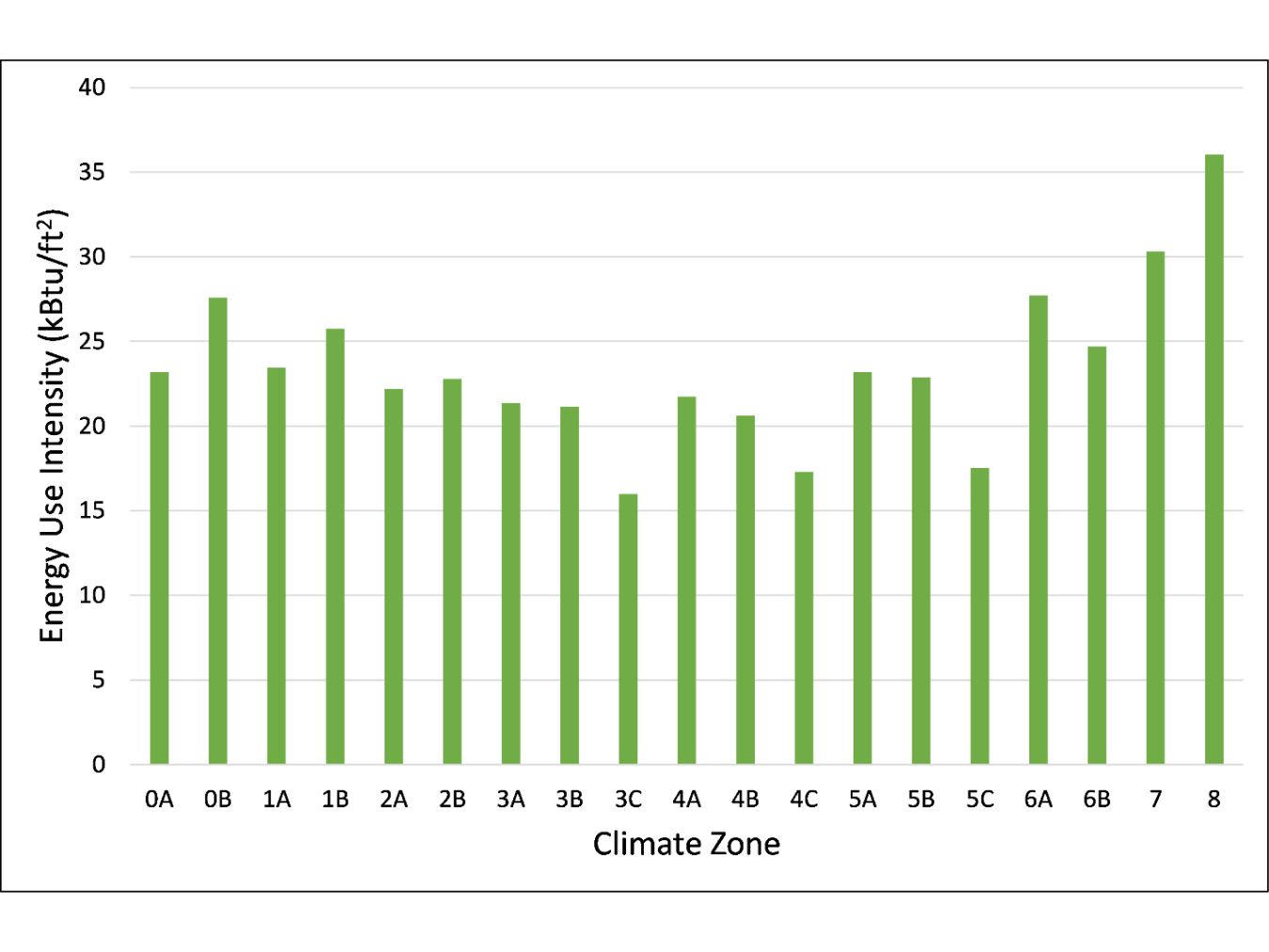ASHRAE has released the "Advanced Energy Design Guide (AEDG) for Small to Medium Office Buildings: Achieving Zero Energy."
June 25, 2019With support and funding from the Office of Energy Efficiency and Renewable Energy's Building Technologies Office at the U.S. Department of Energy (DOE), the American Society of Heating, Refrigerating and Air-Conditioning Engineers (ASHRAE) released the Advanced Energy Design Guide (AEDG) for Small to Medium Office Buildings: Achieving Zero Energy. The guide provides direction on how to cost-effectively design and construct highly energy-efficient office buildings using technology that is readily available today.
A building is considered zero energy when, on an annual basis, it imports equal or less energy than it exports through onsite renewable energy sources. While the primary focus of zero energy buildings is achieving superior energy efficiency, these buildings can also have enhanced resiliency, reduced operating costs, greater occupant satisfaction, and provide valuable grid services like reducing peak loads. The zero energy target is becoming increasingly more attainable for both new and existing commercial buildings due, in part, to DOE's investments to improve technology performance and affordability.
The guide represents the culmination of extensive analysis and modeling to determine energy use intensity (EUI) targets that are financially feasible, operationally workable, and readily achievable with today’s technology. These EUI targets, shown in the figure below, can be used by building owners and design teams to set project goals, craft performance based procurement documents, and inform design choices.

Energy use targets can help contractors and designers successfully plan for zero energy buildings.
To facilitate reaching these EUI targets, the guide also provides recommendations for the building configuration and components, including the building envelope; lighting systems (including electrical interior and exterior lights and daylighting); HVAC systems; building automation and controls; service water heating; plug and process loads; and renewable energy generation systems. It also presents case studies of buildings that have achieved these EUI targets with measured performance.
The guide has been designed to be user friendly with icons that indicate which of the 200+ strategies and recommendations are most appropriate for building retrofits, save money on capital costs, help to improve energy resiliency, and/or align with grid needs. This helps to highlight the multiple benefits that these buildings deliver to owners, occupants, and their communities.
With DOE’s support of Advanced Energy Design Guides, the Building Technologies Office can provide the necessary educational guidance to contractors, engineers, and others involved in the energy-efficiency design process.
Learn more about ASHRAE's complete collection of Advanced Energy Design Guides.
Advanced Energy Design Guide (AEDG) for Small to Medium Office Buildings: Achieving Zero Energy was developed by ASHRAE, the American Institute of Architects, the Illuminating Engineering Society, the U.S. Green Building Council with support and funding from the DOE. Technical analysis was provided by DOE's National Renewable Energy Laboratory.

